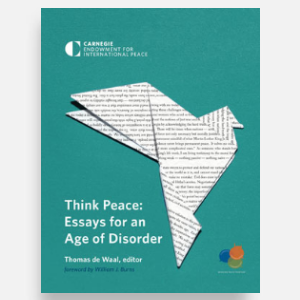No War, No Peace: Healing the World’s Violent Societies
 Hard as this is to believe, we live in one of the most peaceful periods of human history. Homicides have been falling in most parts of the world for centuries. Despite the horrors beamed across the internet, violent deaths from wars between states are at historic lows. Civil war deaths have risen in recent years owing to the conflicts principally in Afghanistan, South Sudan, Syria, and Yemen, but they had fallen so far since the end of the Cold War that they are still a fraction (in per capita terms) of what they were at any time before. After rising for a decade and a half, even violent extremist–related fatalities are on the decline.
Hard as this is to believe, we live in one of the most peaceful periods of human history. Homicides have been falling in most parts of the world for centuries. Despite the horrors beamed across the internet, violent deaths from wars between states are at historic lows. Civil war deaths have risen in recent years owing to the conflicts principally in Afghanistan, South Sudan, Syria, and Yemen, but they had fallen so far since the end of the Cold War that they are still a fraction (in per capita terms) of what they were at any time before. After rising for a decade and a half, even violent extremist–related fatalities are on the decline.
As Rachel Kleinfeld and Robert Muggah note, levels of state-to-state conflict in the world are now at historic lows. The world’s big powers confront one another by other means, whether that be proxy war in third countries, punitive trade tariffs, or digital subversion. What’s more, the nation-states of the early twenty-first century are probably weaker than at any time in modern history, and arguably are making a last stand against a long process of global integration (how else to explain the quixotic isolationist politics of Brexit?). But the states are making a loud noise in the meantime. In the last few years, in their different ways the governments of Brazil, China, India, Pakistan, Russia, Turkey, and the United States have fostered global disruption in the name of their “national interest.”


